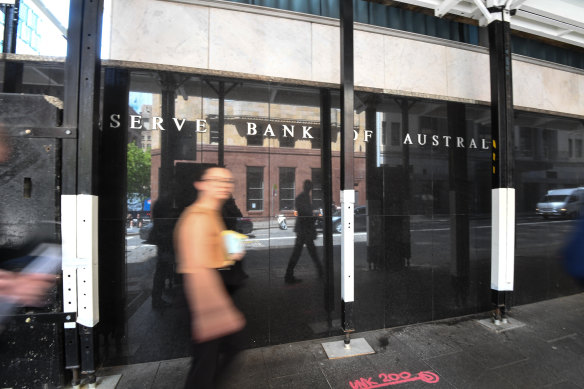This was published 5 months ago
Canada, Europe cut rates. Can Australia follow with monetary policy easing?
Buoyed by the Canadian and European central banks cutting the cash rate last week, global sharemarkets rallied and boosted hopes the inflation tide has finally turned.
A quarter of global central banks have now begun easing monetary policy, and while economists believe Australia is still months away from following suit, they suggest it still faces a “narrow path” between taming inflation and avoiding a recession.

Will Australia soon join a quarter of global central banks that have cut their cash rate? Credit: Peter Rae
The ECB last week announced it would cut its main refinancing operations and the deposit facility by 25 basis points to 4.25 per cent and 3.75 per cent, respectively. The Bank of Canada became the first major central bank among the Group of Seven countries to cut the cash rate, in its case by a quarter of a percentage point, to 4.75 per cent.
Excited investors last week sent US shares rallying 1.3 per cent. Eurozone shares advanced 0.9 per cent, Japanese shares lifted 0.5 per cent and Australian shares climbed 2.1 per cent, leaving the market just 0.5 per cent below its record high in March.
“Our market obviously benefited, but the question is what does it mean for Australian interest rates? It’s a positive sign, but it doesn’t mean we’re going to follow suit immediately,” said AMP chief economist Shane Oliver.
“Canada raised rates before we did, and Europe after, so it’s going to be the same story on the way down: different central banks move at a different pace.”
Although Canada and Europe have begun their easing cycle, their peak cash rate was higher than Australia’s 4.35 per cent, and their economies were weaker.
Canada’s inflation stands at 2.7 per cent and Europe’s at 2.4 per cent, compared to Australia’s 3.6 per cent. Unemployment in Canada has risen to 6.2 per cent and in Europe to 6.5 per cent, compared to 4.1 per cent in Australia.
Job advertisements fell 4.7 month on month in March, according to the most recent report from Seek, and they are 18.6 per cent lower compared to the previous year. Applications per job ad rose everywhere except the Australian Capital Territory, where they fell 3 per cent, in a key sign the labour market is slowing.
Appearing before the Senate last week and ahead of the Bank of Canada and European Central Bank’s decision, RBA governor Michele Bullock said the board would begin lowering interest rates when there were clear signs inflation was coming into the bank’s target range of 2 per cent to 3 per cent.
Oliver said former RBA governor Philip Lowe’s “narrow path” for curbing inflation without triggering an economic downturn was getting narrower and the “risk of falling off the path into recession is higher”.
He said the economy had so far been buttressed by population growth and savings buffers, but the former was weakening and the latter was “close to running out”.
The economy grew by just 0.1 per cent over the first three months of 2024, according to Australian Bureau of Statistics figures released last week. However, for the fifth consecutive quarter, economic activity declined on a per capita basis.
Jun Bei Liu, lead portfolio manager at the $1.7 billion Tribeca Investments Partners, said all the data, including the Fair Work Commission’s decision last week to lift the minimum and award wages rate by 3.75 per cent, pointed to signs the economy was slowing down.
“The sticky component of the inflation will gradually ease off,” said Liu. “The underlying economy is not collapsing; it’s slowing as expected, but it’s not collapsing. Corporate earnings are also slowing but not collapsing. All in all, the sharemarket is holding up OK. On interest rates, certainly the next move is down.”
The Market Recap newsletter is a wrap of the day’s trading. Get it each weekday afternoon.